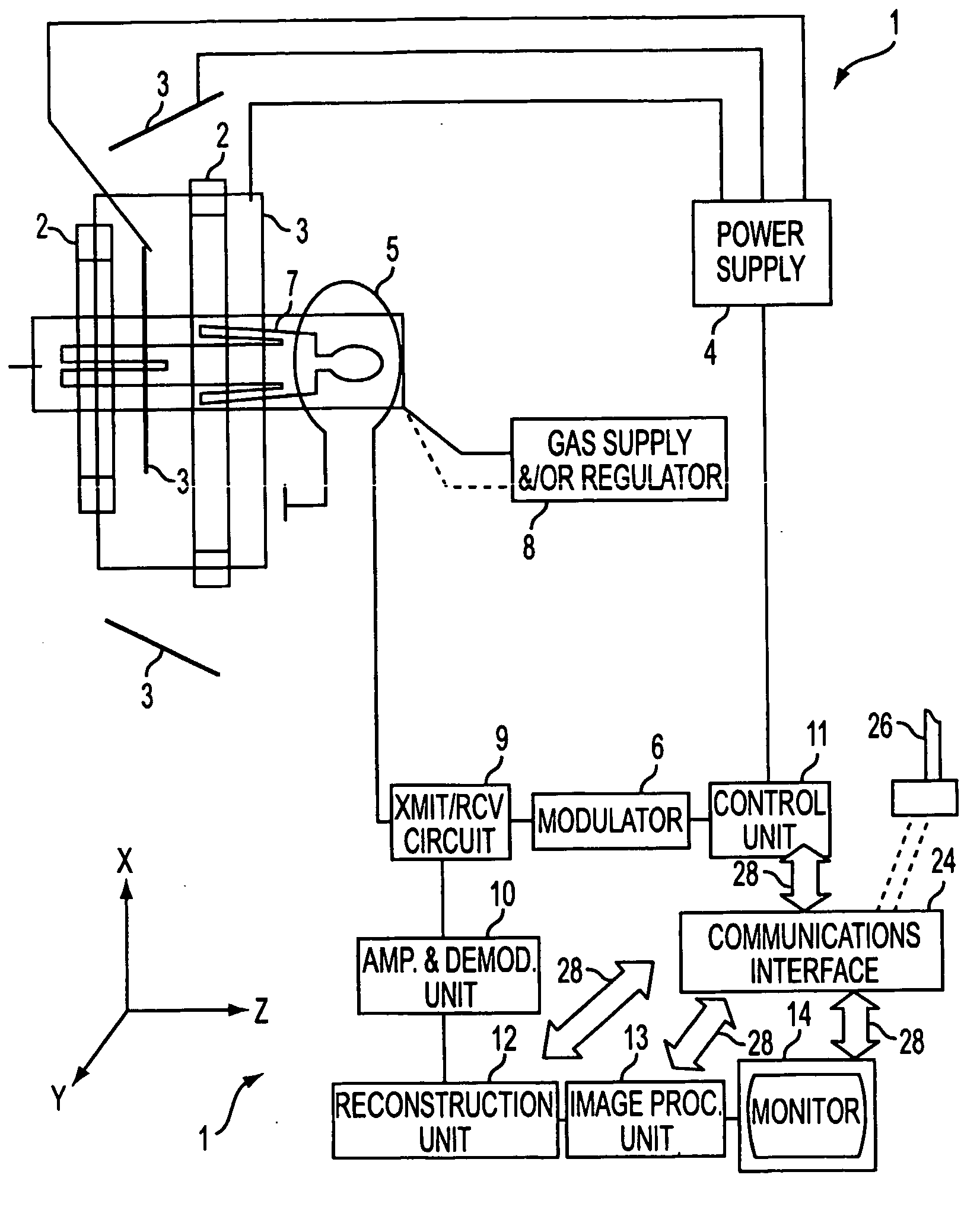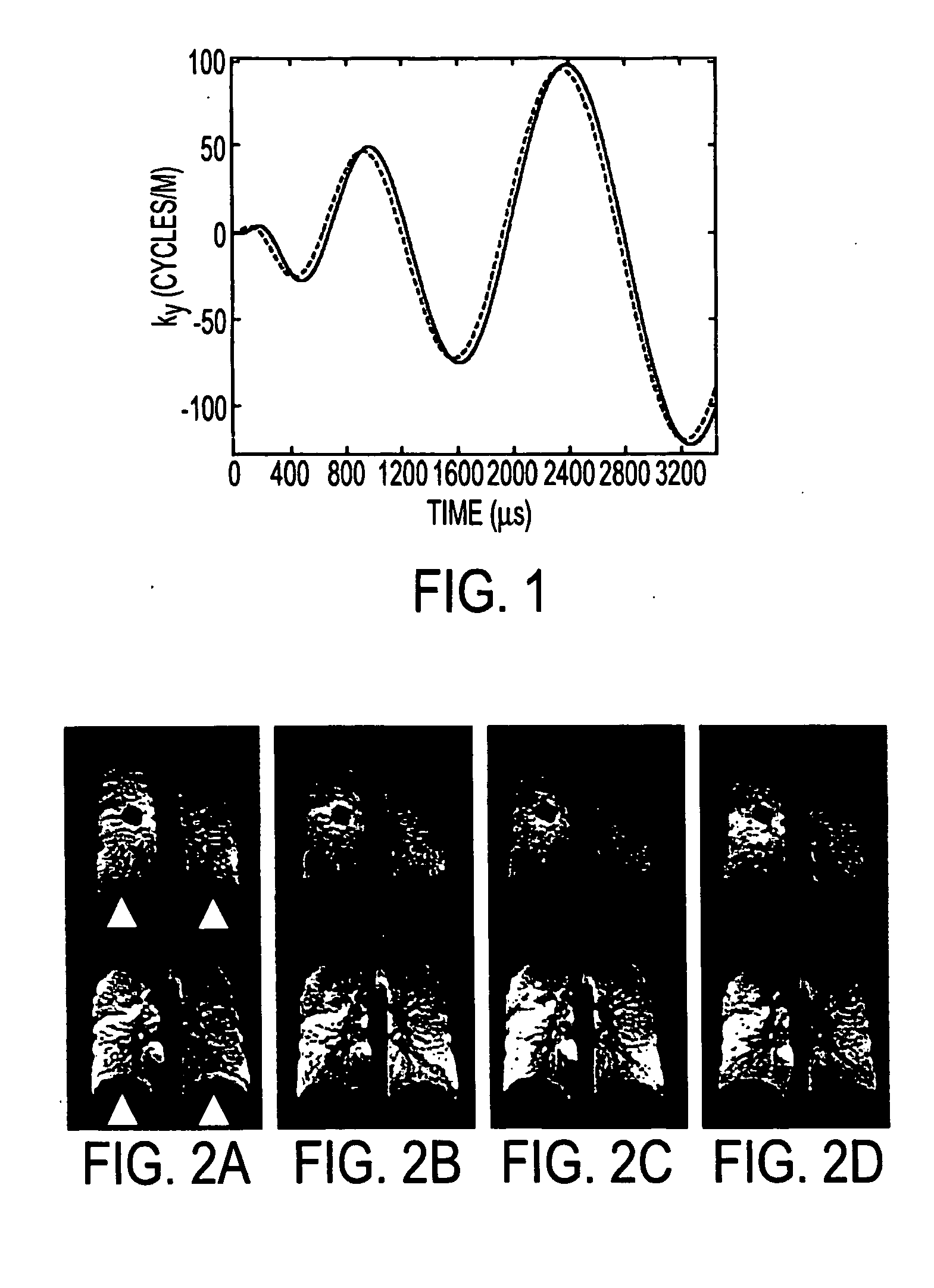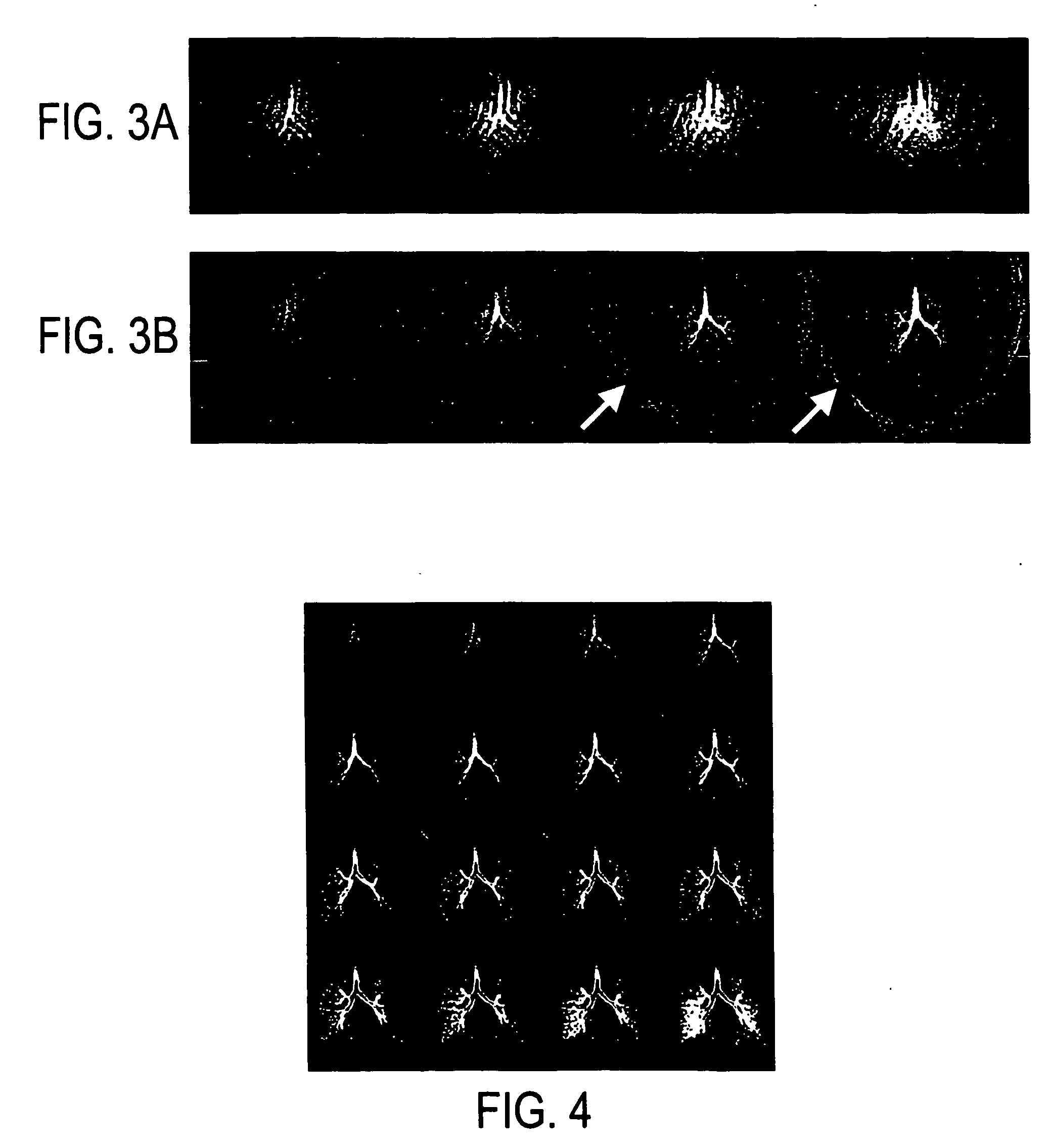Optimized high-speed magnetic resonance imaging method and system using hyperpolarized noble gases
a high-speed magnetic resonance imaging and noble gas technology, applied in the direction of magnetic variable regulation, process and machine control, instruments, etc., can solve the problems of high temporal resolution, no extension, and no means to visualize gas-flow dynamics with high spatial resolution, and no extension, and no extension, can solve the problem of high spatial resolution, high temporal resolution, and low resolution of high-speed conventional gradient-echo pulse sequences. the effect of high spatial resolution
- Summary
- Abstract
- Description
- Claims
- Application Information
AI Technical Summary
Benefits of technology
Problems solved by technology
Method used
Image
Examples
example no.1
EXAMPLE NO. 1
[0096] A specific pulse-sequence implementation that satisfies the six general requirements listed above is useful to illustrate the nature of the invention. For this purpose, we will discuss the case of an interleaved-spiral-type pulse sequence (See Meyer C. H., Hu B. S., Nishimura D. G., Macovski A., "Fast Spiral Coronary Artery Imaging", Magn. Reson. Med., 1992, 28:202-213 [herein after "Meyer, Hu et al."]). This k-space trajectory was chosen as a starting point because, by nature, an interleaved spiral satisfies requirements (1), (2), (3) and (4). The interleaved-spiral trajectories were designed specifically for .sup.3He imaging and were optimized specifically to meet requirement (6). Further, we demonstrated that these optimized trajectories meet requirement (5) for .sup.3He imaging. In addition, we implemented a specific temporal ordering for the acquisition of the spiral trajectories that further decreases the level of motion artifacts.
[0097] We have used the re...
example no.2
EXAMPLE NO. 2
[0144] Dynamic Imaging in Patients with Lung Disease
[0145] We tested the dynamic interleaved-spiral imaging technique in a variety of lung pathologies including asthma, cystic fibrosis, chronic obstructive pulmonary disease, emphysema secondary to .alpha.-1 antitrypsin deficiency, and post lung transplant. The patients were instructed to inhale the gas over the first half, and exhale over the second half, of the 15-second acquisition period. Imaging was performed in the coronal orientation.
[0146] Referring to FIG. 8A, in a patient with severe asthma there were several regions that demonstrated abnormal ventilation patterns. Since this subject's lungs were hyperinflated, as typically seen in this disease, there was limited diaphragmatic excursion during inspiration. The images demonstrated a heterogeneous filling pattern, with portions of the middle lung zones filling prior to the lower lung. It was also evident that some regions of the lung filled at different rates and...
example no.3
EXAMPLE NO. 3
[0154] Introduction
[0155] Hyperpolarized .sup.3He spin-density imaging of the lung shows promise for characterizing diseases such as asthma and emphysema. As the size, location and shape of ventilation defects resulting from these diseases are highly variable, volumetric imaging with isotropic spatial resolution is desirable for their accurate quantification.
[0156] Hyperpolarized .sup.3He imaging has most commonly used gradient-echo (GRE) pulse sequences. However, volumetric GRE imaging with isotropic spatial resolution of a few millimeters requires an acquisition time of .about.20 seconds, which is longer than the breath-hold duration that can be tolerated by patients with compromised respiratory function.
[0157] A goal of this investigation was to develop interleaved-spiral pulse sequences using optimized slew-limited spirals to obtain images covering the whole lung with 4-mm isotropic spatial resolution in under 10 seconds. We compared two strategies: a rapid 2D inter...
PUM
 Login to View More
Login to View More Abstract
Description
Claims
Application Information
 Login to View More
Login to View More - R&D
- Intellectual Property
- Life Sciences
- Materials
- Tech Scout
- Unparalleled Data Quality
- Higher Quality Content
- 60% Fewer Hallucinations
Browse by: Latest US Patents, China's latest patents, Technical Efficacy Thesaurus, Application Domain, Technology Topic, Popular Technical Reports.
© 2025 PatSnap. All rights reserved.Legal|Privacy policy|Modern Slavery Act Transparency Statement|Sitemap|About US| Contact US: help@patsnap.com



